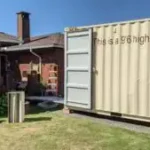Variances can provide the flexibility you need to achieve your development goals when zoning regulations don’t align with your plans. Navigating the application process for zoning variances in Canada can seem daunting, but understanding the steps involved can make it manageable. In this guide, you will learn how to properly prepare your application, the crucial documents you need, and the key considerations to keep in mind to effectively communicate your case. Let’s dive in and help you move forward with your project with confidence.
Key Takeaways:
- Understand the local zoning bylaws and regulations before submitting an application for a variance, as each municipality may have different requirements.
- Prepare a detailed application that includes the specific reasons for requesting the variance, potential site plans, and any relevant supporting documents to strengthen your case.
- Engage with community stakeholders and attend public meetings to address any concerns and build support for your application during the review process.
Assessing Your Eligibility for a Zoning Variance
Before proceeding with your application, evaluate your eligibility for a zoning variance by considering various factors such as local bylaws, the specific use of your property, and the surrounding environment. Each municipality has its own unique set of guidelines, which means that understanding your local context is important. Assessing your circumstances against these rules will help you determine if your request is likely to be approved or if adjustments are necessary.
Local Bylaw Compliance
Your application must align with the local bylaws governing your property. These bylaws set the framework for what is permissible in specific zones, whether that involves building height, land use, or density restrictions. Any violation of these bylaws may lead to your variance request being denied. Review your local zoning regulations thoroughly to ensure your proposal adheres to the established standards.
Understanding the Required Criteria
Every municipality has established criteria that must be satisfied for a zoning variance application. Typically, these criteria include demonstrating that the variance is minor, will not adversely affect neighboring properties, and is in line with the municipality’s planning goals. You’ll need to compile evidence supporting your case, such as reports from planning professionals or testimonials from neighbors who support your request. The clearer and more compelling your argument, the better chance you have at gaining approval.
Understanding these criteria involves more than merely satisfying basic requirements. You should articulate why your request deserves consideration despite existing regulations. For instance, pointing out how your proposed changes can enhance community aesthetics, improve property values, or address specific local needs may strengthen your application. Tailoring your arguments to the priorities outlined in community plans or strategic documents can further bolster your position, thereby showcasing your intention to contribute positively to the area.
Crafting a Compelling Application
Developing a compelling application for a zoning variance requires careful attention to detail to align with municipal objectives and community needs. Employ the right balance of factual information and persuasive storytelling to ensure your proposal resonates with decision-makers. Highlight the unique aspects of your case and demonstrate how the variance will serve the broader interests of the community while addressing your particular circumstances.
Essential Documentation
Your application must include crucial documentation that substantiates your request. This typically involves site plans, surveys, photographs, and a detailed narrative explaining the need for the variance. Providing clear, organized documents will not only strengthen your case but also expedite the review process by helping officials assess your proposal efficiently.
Articulating Your Justification
Effective articulation of your justification is vital to convey why the variance should be granted. Address the specific zoning bylaw sections your application relates to and explain how your proposal meets the criteria set by the local municipality. Offer evidence of any unique circumstances that may warrant the variance, such as topographical challenges or existing land use.
Delving deeper into your justification, connect your request to broader community benefits. For instance, if you’re seeking a height variance for a new building, explain how this addition can enhance local aesthetics or even contribute to environmental goals, such as improved energy efficiency. Use data, case studies from similar situations, or testimonials from neighbors to strengthen your position and demonstrate potential positive outcomes. A well-researched justification is often the key differentiator in gaining approval for your variance request.
Navigating the Submission Process
Understanding the submission process for zoning variance applications is necessary to streamline your approach. You will need to gather all necessary documentation and be prepared to present your case convincingly. Each municipality may have distinct submission guidelines, so carefully review local requirements to ensure compliance and expedite processing. In addition, you’ll often need to address any concerns raised by the community or stakeholders throughout this phase.
Overview of Application Channels
Your application will typically be submitted through the planning department of your local municipality. Many regions offer both online and physical submission options, allowing you to choose the method that best suits your needs. Be sure to check if electronic submissions require specific formats, as incorrectly formatted files can delay processing.
Timeline Expectations and Key Dates
Anticipating a timeline for your zoning variance application is vital to scheduling your project. The timeline can differ significantly based on the municipality, but many applications can expect a processing period ranging from six weeks to several months. Local bylaws often dictate key dates, so it’s beneficial to familiarize yourself with these to stay on track.
For instance, some municipalities may have specific submission windows, while others operate on a rolling basis. Moreover, public hearings can impact the timeline since these events allow community members to voice their opinions, which can prolong the decision-making process. Planning ahead is necessary to accommodate these variables, and maintaining open communication with municipal staff will help you stay informed about critical dates and potential holdups.
Engaging with Stakeholders and the Community
Engaging with stakeholders and the community is a vital step in the zoning variance process. By fostering open dialogue, you can gather vital feedback and insights that can influence both your application and its acceptance. Hosting community meetings or informal gatherings allows local residents to voice their concerns and contribute to the discussion. For guidance on how to effectively approach this stage, check out Applying for a Variance | District of West Vancouver.
The Importance of Public Input
Public input can significantly impact the outcome of your zoning variance application. Engaging with local residents helps you understand the community’s perspective, which may uncover potential issues or objections that you had not considered. Addressing these concerns early can lead to a smoother approval process and even garner support from your neighbors, making your project more favorable in the eyes of decision-makers.
Strategies for Addressing Community Concerns
To successfully navigate community concerns, consider proactive strategies such as holding informational sessions, distributing surveys for feedback, and offering to meet with local advocacy groups. Transparency is key; explain how your development aligns with community goals or addresses existing needs. Providing clear visual aids or examples of similar successful projects can also help alleviate apprehensions. Taking the time to build relationships and showing attentiveness often mitigates resistance and fosters a cooperative environment.
Understanding the community’s needs is vital for a successful zoning variance application. For instance, if your proposal involves increased density, presenting data on local infrastructure capacity can demonstrate that your development will not strain resources. You can also invite community members to share their experiences and concerns, ensuring they feel heard. Implementing ideas from public feedback into your project, such as adding green spaces or enhancing traffic management solutions, can create a win-win situation that addresses community needs while fulfilling your vision.
Preparing for the Hearing
Preparation ahead of the zoning variance hearing is crucial for presenting your case effectively. Familiarize yourself with the hearing procedures as well as the specific points you need to cover regarding your application. Preparing visual materials, such as maps or photos, can help support your argument. Documentation that highlights community support, along with research on similar cases, can provide additional weight to your presentation and helps establish the validity of your request.
Key Elements of the Presentation
During your presentation, focus on several key elements that clearly articulate your case. Start with a concise introduction that outlines your proposal and its objectives. Follow up with a detailed explanation of how the variance aligns with community interests and zoning regulations. Utilize data, testimonies, and visual aids to reinforce your points, making your case as compelling and relatable as possible for the officials present.
Anticipating Questions from Officials
Anticipating potential questions from officials requires you to thoroughly understand both your proposal and the zoning regulations at play. Be prepared to address concerns related to property values, neighborhood character, environmental impacts, and traffic implications. Officials are keen on ensuring that the variance will not negatively impact the surrounding area, so having well-thought-out responses ready can strengthen your argument.
To effectively anticipate questions, dive deeper into the specifics of your project and its implications. Analyze potential areas of concern, and have data ready that addresses these effectively, whether it be environmental studies, economic impact assessments, or community testimonials. For instance, if you’re proposing a commercial development in a residential area, be ready to discuss how you’ll mitigate noise or traffic concerns. Showing that you’ve considered these factors thoughtfully reassures officials and enhances your credibility.
Final Steps and Appeals
Understanding the Decision-Making Process
The decision-making process for zoning variances involves careful review by municipal authorities who consider factors such as community impact, compliance with local bylaws, and the validity of your justification for the variance. This is typically followed by a report or a meeting where all input is evaluated. You should stay engaged and be prepared to respond to any questions or concerns that may arise during the review. For a detailed overview of the variance process, visit Zoning Variance.
Options for Appeal if Denied
If your application for a zoning variance is denied, you do not necessarily have to accept the decision. You have the option to appeal it, which typically involves submitting a formal appeal to the local council or a designated appeals board, depending on your municipality’s regulations.
In appealing a denial, you will need to present a compelling case as to why the original decision should be reconsidered. This may involve highlighting new evidence or clarifying aspects of your original proposal that may not have been understood. Depending on your municipality’s regulations, you might also be required to submit the appeal within a specific timeframe, often 14 to 30 days following the original decision. Engaging with legal expertise can help strengthen your appeal by ensuring compliance with the relevant protocols and presenting a strong argument for re-evaluation. Understanding local bylaws and aligning your appeal with community interests can further bolster your case.
Summing up
Now, you’re equipped with the knowledge to navigate the zoning variance application process in Canada. Ensure you understand your local bylaws, gather necessary documentation, and prepare a compelling case that addresses community impacts. Engaging with local officials and consulting with professionals can significantly enhance your chances of approval. By following the steps outlined, you can effectively advocate for your zoning needs, paving the way for your project to succeed.
FAQ
Q: What is a zoning variance and why might I need one?
A: A zoning variance is a request to deviate from specific regulations in a zoning ordinance. Property owners may seek a variance when their plans do not comply with existing zoning requirements, such as building height restrictions, lot size, or setback regulations. For instance, if you want to build an addition to your home that exceeds the allowed height, you would need to apply for a variance to obtain permission from the local governing body.
Q: How do I start the process of applying for a zoning variance in Canada?
A: To initiate the application process, you should first review your local zoning bylaws to understand the specific requirements and limitations associated with your property. After that, gather the necessary documents, which may include site plans, drawings, and a detailed description of your variance request. You will then submit these to your local municipality’s planning department, along with any required fees. It may also be beneficial to consult with a land use planner or legal advisor to help navigate the process.
Q: What factors does the municipality consider when reviewing a zoning variance application?
A: Municipalities assess several factors when reviewing a zoning variance application, including the potential impact on surrounding properties, the compatibility of the proposed use with the neighborhood, and whether the variance request is minor and necessary for the reasonable use of the property. Additionally, the administrative body may evaluate whether the application aligns with the overall objectives of the community’s development plan. Engaging with local stakeholders can also enhance the likelihood of approval, as community support can influence the decision-making process.





